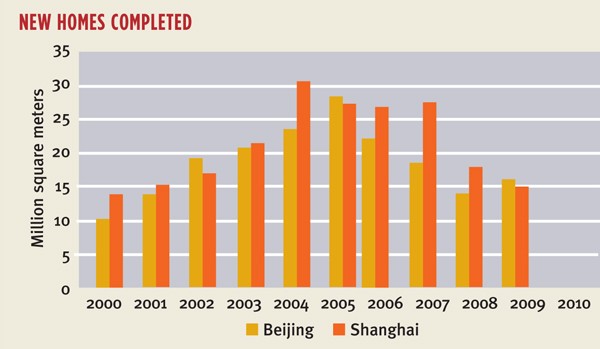Expanding the Supply of Affordable Housing Urban Land Magazine
Post on: 10 Июнь, 2015 No Comment

January 24, 2014
Solutions to increase the supply of affordable rental housing are explored in a new report from ULI’s Terwilliger Center for Housing and Enterprise Community Partners Inc.
Bending the Cost Curve: Solutions to Expand the Supply of Affordable Rentals outlines factors that impede the development of affordable rental housing—causing the supply in many markets to fall far short of the demand—and offers specific, actionable solutions to overcome the barriers.
Nationally, there were only 6.9 million rentals affordable to 11.8 million extremely low-income renters in 2011, a supply gap that grew by 3 million renters between 2001 and 2011—and continues to grow. “In an era of growing demand and declining government financial support for affordable rental housing, it is more important than ever to deliver affordable housing as effectively as possible,” the report says. “Bending the cost curve will enable developers to deliver additional affordable rental homes and help jurisdictions provide more housing choices, meet the growing need for affordable rentals, and ensure that individuals and families across a range of incomes have a place to call home within the community.”
The report, released at the ULI/Carolyn and Preston Butcher Forum on Multifamily Housing, is based on a series of interviews and roundtable discussions cohosted by the Terwilliger Center and Enterprise over the past 16 months with nearly 200 developers, financiers, and policy makers in ten markets—Chicago, Denver, Los Angeles, New York City, San Francisco, Boston, Houston, Minneapolis, Pittsburgh, and Seattle.
Conclusions drawn from the discussions formed the basis for the research, which is intended to help fill the void of material examining how to overcome regulatory barriers to affordable rental development, such as land use, zoning, and building code restrictions; processing delays; and financing obstacles. While economic conditions and demographics vary widely among different markets and play a significant role in local affordable housing development, the report identifies several overarching cost drivers, including the following:
- Project scale. Fixed costs such as land, legal expenses, and funding application fees are not correlated to the number of units and often make smaller projects less economical on a per-unit basis.
- Project design and construction. Community concerns, site selection, the price of construction labor, and state and local regulations affect the ability to produce high-quality units at an affordable cost.
- Financing and underwriting. Because affordable rentals produce a lower level of profit, developers face several financing obstacles, such as difficulty in attracting investors who are strictly yield-driven; complicated deals requiring multiple layers of funding; and limited or no availability of financing for smaller projects and for mixed-income projects.
- Complex deal structures. Project fees, timing of tax credit use, higher risk, greater due diligence, longer timelines, and the need to set aside capital reserves all drive up costs.

“Drivers of cost come at all points in the development process and are deeply intertwined, but the need for more affordable rentals compels us to take on the challenge of understanding the drivers and work to mitigate them,” says Lynn Ross, executive director of the Terwilliger Center.
“Enterprise and ULI will use the joint research to spark federal, state, and local conversations that lead to policy change and financial innovation, ultimately stretching limited resources for affordable housing,” says Ali Solis, senior vice president of public policy and external affairs at Enterprise. “At the same time, we must maintain high-quality green standards so that affordable homes can be sustainable for the long haul. That is our challenge as an industry.”
To address cost drivers, the report offers the following recommendations:
• Promote cost-effectiveness through consolidation, coordination, and simplification. This includes consolidating monitoring and due diligence activities; coordinating competitive funding competitions; improving codes, zoning, and regulation; and streamlining U.S. Department of Housing and Urban Development (HUD) financing.
• Remove barriers to reducing construction costs and delays. This includes implementing smart parking requirements; reviewing unit size and amenity requirements; reforming codes and other rules that make rehabilitation difficult; finding ways to better coordinate development teams; and supporting innovative building techniques like micro-units and prefabricated housing.
• Facilitate a more efficient deal assembly and development timeline. This includes eliminating zoning barriers to by-right housing development; creating clarity and structure in the public engagement process; adopting state and local policies to streamline local development; promoting consistency in state qualified allocation plans (QAPs); and adopting efficient deadlines for deal assembly and project development.
• Improve and align incentives. This includes evaluating life-cycle cost considerations in the underwriting process; creating incentives for green building and energy-efficient design; incorporating cost considerations in the QAP process; assessing the time frame in which costs are evaluated for the purpose of underwriting; providing local incentives for affordable housing development (such as land acquisition subsidies, property tax abatements, fee waivers, and expedited permitting); and removing perverse incentives that can increase costs (potentially by adopting alternate compensation models or flexible tax credit allocations).
• Improve the flexibility of existing sources of financing and create new financial products to better meet needs. This includes exploring entity-level financial products; facilitating the acquisition of existing multifamily properties through direct subsidies, public/private partnerships, or regulatory flexibility; facilitating more efficient use of project reserves; and providing greater flexibility in 4 percent low-income housing tax credit allocations (such as alternate sources of debt financing, private placement of bonds, or direct bond purchases).
• Support the development and dissemination of information and best practices. This includes creating a cost competition to support innovative practice; determining appropriate units of measurement and comparison to guide decision making (such as costs-per-unit or costs-per-person); building a community of practice; and creating a forum for sharing data and best practices.
In addition to the recommendations, the report identifies three lessons drawn from the research:
1) Cost drivers come at all points in the development process and are deeply intertwined; 2) mitigating the cost drivers requires collaboration efforts involving multiple stakeholders from the private and public sectors; and 3) leadership is essential to implement the recommendations.














